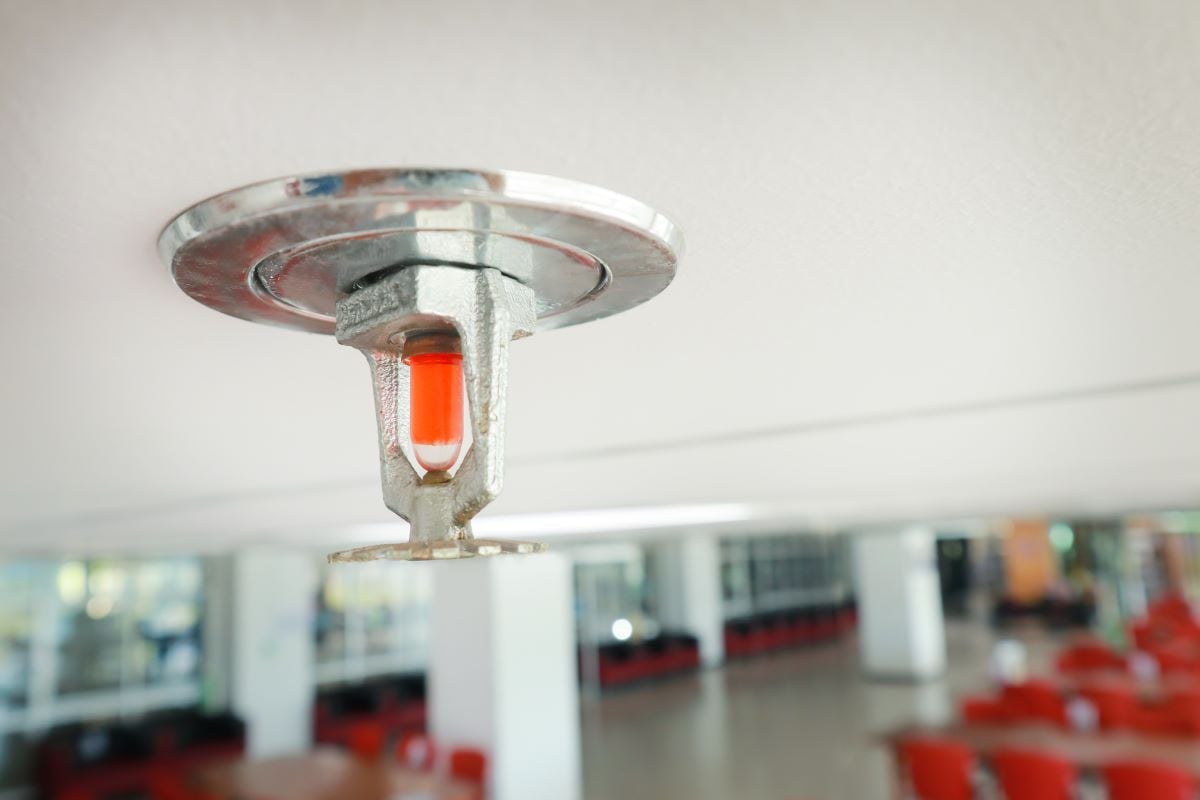
A fire sprinkler system is a network of pipes and sprinkler heads that are installed in a building to help extinguish or control a fire. The system is activated when a sprinkler head is triggered by heat, causing water to be released and sprayed onto the fire. This can help to suppress the flames and limit the spread of the fire.
There are several different types of fire sprinkler systems, including:
-
Wet Pipe Systems: This is the most common type of fire sprinkler system, typically found in commercial and residential buildings. In a wet pipe sprinkler system, the pipes are filled with water. When a sprinkler head is activated, water is immediately released and sprayed onto the fire.
-
Dry Pipe Systems: This type of system is typically used in buildings where the pipes may freeze, such as in unheated areas or areas with low temperatures. In a dry pipe system, the pipes are filled with air and are pressurized. When a sprinkler head is activated, the air pressure drops, allowing a valve to open and water to flow into the pipes and be sprayed onto the fire.
-
Pre-Action Systems: This type of system is similar to a dry pipe system, but it adds an additional layer of protection by adding an electronic pre-action valve that is activated by a smoke, heat, or flame detector. This type of system is typically used in areas where a false alarm is a concern, such as in computer rooms or art galleries.
-
Deluge Systems: This type of system is typically used in areas where a fire is likely to spread quickly, such as in chemical storage facilities or power plants. In a deluge system, all of the sprinkler heads are open, and water is immediately released by a deluge valve and sprayed onto the fire when a heat or smoke detector activates the system.
Each type of system has its own advantages and disadvantages, and the best system for a particular building will depend on factors such as the type of building, the occupancy, and the hazard level.
It's worth noting that this is a brief overview of the basics of a fire sprinkler system. There are many other important factors to consider when designing, installing, and maintaining a system. In addition, it is important to note that the information provided is general in nature, and specific design, installation and maintenance of fire sprinkler systems should be performed by qualified professionals.
Additionally, it is essential to follow the codes and standards set by the NFPA and other organizations. NFPA 25, Standard for the Inspection, Testing, and Maintenance of Water-Based Fire Protection Systems, provides more detailed information.
To learn more about fire sprinkler systems for your application, contact the fire sprinkler experts at Koorsen Fire & Security. Since 1946, we have helped businesses of all sizes protect life and property.


